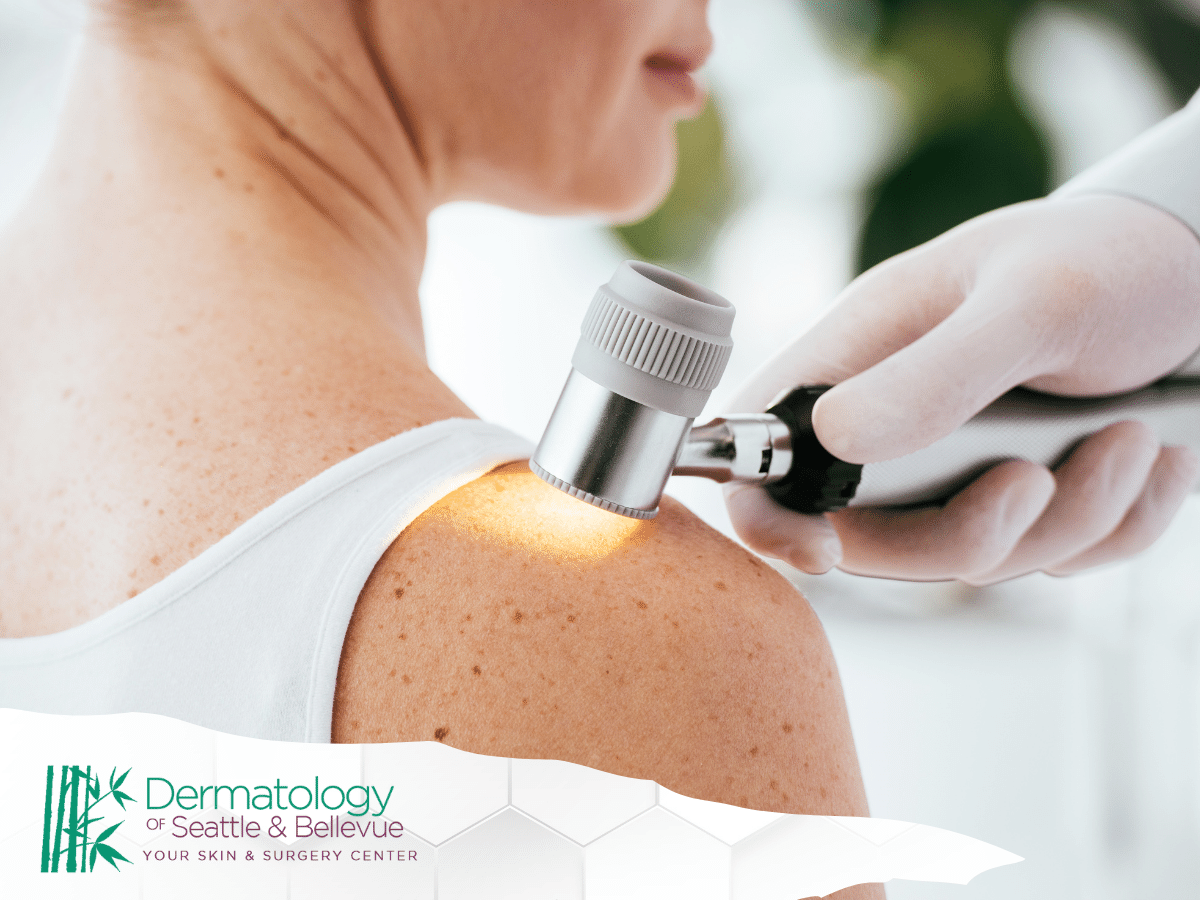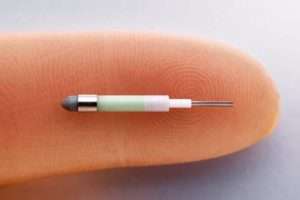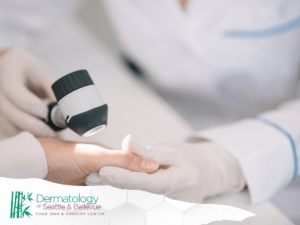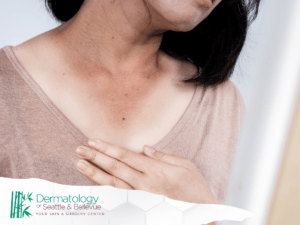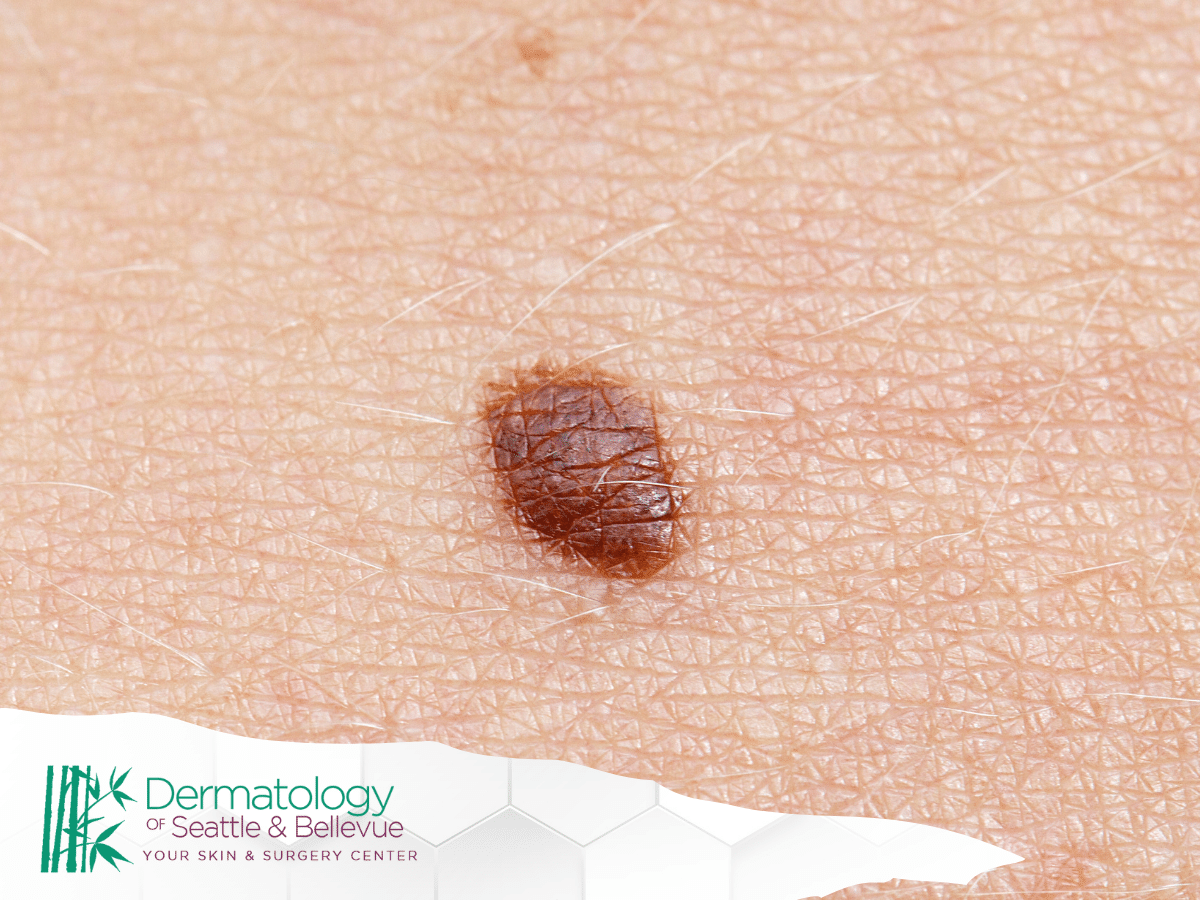This blog post will clarify the difference between a blood blister and melanoma.
Understanding Blood Blisters: Causes and Prevention
Blood blisters are fluid-filled sacs that form beneath the skin’s surface due to trauma or injury. Understanding the causes and taking preventive measures can help minimize their occurrence. Here’s what you need to know:
Causes of Blood Blisters
- Trauma or Friction: Blood blisters often result from repetitive friction or trauma to the skin, such as wearing ill-fitting shoes or engaging in activities that put pressure on specific areas of the body.
- Blood Vessels Damage: When blood vessels beneath the skin’s surface rupture due to trauma, blood collects within the skin, forming a blister.
- Sun Exposure: Prolonged exposure to the sun’s ultraviolet (UV) rays can weaken the skin and make it more susceptible to blister formation, particularly in areas prone to sunburn.
- Burns or Freezing: Extreme temperatures, such as burns from hot objects or frostbite from freezing conditions, can damage the skin and lead to blister formation.
Strategies to Prevent Blood Blisters
- Wear Proper Footwear: Choose shoes that fit well and provide adequate support to reduce friction and pressure on the feet. Avoid wearing tight or narrow shoes that can rub against the skin and cause blisters.
- Use Protective Gear: When engaging in activities that may cause friction or trauma to the skin, such as sports or manual labor, wear appropriate protective gear, such as gloves or padding.
- Moisturize and Protect: Keep the skin moisturized to maintain its elasticity and resilience. Use sunscreen with a high SPF to protect against UV damage and reduce the risk of sunburn.
Additional Information:
- Avoid Popping Blisters: Resist the urge to pop or drain blood blisters, as this can increase the risk of infection and delay healing. Instead, allow the blister to heal naturally, and cover it with a sterile bandage to protect it from further irritation.
- Monitor for Signs of Infection: Keep an eye on blood blisters for signs of infection, such as redness, swelling, warmth, or drainage of pus. If infection occurs, seek medical attention promptly.
Understanding the causes of blood blisters and taking preventive measures can reduce the likelihood of developing these painful skin lesions. However, if you experience recurrent or persistent blood blisters, consult a healthcare professional for further evaluation and management.
Early Stage Melanoma vs Blood Blister: Key Differences

Distinguishing between early-stage melanoma and a blood blister is crucial for timely diagnosis and appropriate treatment. Here are the key differences:
Appearance:
- Melanoma: Early-stage melanomas often appear as asymmetrical, irregularly shaped moles or lesions with uneven borders and varying colors, including shades of brown, black, or even red.
- Blood Blister: Blood blisters typically present as fluid-filled sacs beneath the skin’s surface, ranging in color from dark red to purple, and may have a clear or blood-tinged fluid.
Texture:
- Melanoma: Melanomas may exhibit changes in texture, such as scaling, crusting, or oozing, and may feel firm or raised compared to the surrounding skin.
- Blood Blister: Blood blisters often have a smooth, rounded surface and may feel tender or painful to the touch, especially if located in areas prone to friction or pressure.
Evolution:
- Melanoma: Early-stage melanomas may evolve over time, growing in size, changing shape or color, or becoming symptomatic with itching, bleeding, or ulceration.
- Blood Blister: Blood blisters typically result from trauma or injury and tend to resolve on their own as the body reabsorbs the trapped blood without significant changes in size or appearance.
Location:
- Melanoma: Melanomas can develop anywhere on the body, including areas not exposed to the sun, and may arise from existing moles or appear as new lesions.
- Blood Blister: Blood blisters commonly occur on areas of the body subjected to friction or pressure, such as the hands, feet, or toes, but can also occur on other parts of the body.
Risk Factors:
- Melanoma: Risk factors for melanoma include a history of sun exposure, fair skin, a family history of melanoma, a weakened immune system, and the presence of numerous or atypical moles.
- Blood Blister: Blood blisters are often caused by physical trauma, such as friction, pressure, burns, or freezing, and can occur in people of all ages and skin types.
Seeking Medical Attention:
- Melanoma: If you notice any suspicious changes in a mole or lesion, such as asymmetry, irregular borders, color variations, or changes in size or texture, it’s essential to consult a dermatologist for evaluation and possible biopsy.
- Blood Blister: While most blood blisters heal on their own without intervention, seek medical attention if a blood blister becomes infected, enlarges significantly, or fails to resolve within a reasonable time frame.
Understanding these key differences can help you distinguish between early-stage melanoma and a blood blister, enabling prompt identification and appropriate management.
Signs of Melanoma: Recognizing Suspicious Changes
Melanoma, the deadliest form of skin cancer, often begins as an abnormal mole or lesion on the skin. Recognizing the signs of melanoma and knowing what changes to look for can aid in early detection and potentially lifesaving treatment. Here are some key signs to be aware of:
Asymmetry:
- A normal mole is typically symmetrical, meaning if you were to draw a line through the center, both halves would mirror each other. In contrast, melanomas often have irregular or asymmetrical shapes.
Irregular Borders:
- Benign moles usually have smooth, even borders. Melanomas, on the other hand, may have uneven, scalloped, or notched borders.
Color Variation:
- While benign moles are usually a single shade of brown, melanomas often contain multiple colors or shades, including brown, black, red, blue, or white.
Diameter:
- Melanomas are generally larger in diameter than benign moles. While benign moles are typically smaller than the eraser on a pencil, melanomas are often larger than 6 millimeters (about the size of a pencil eraser) when diagnosed, although they can be smaller.
Evolution:
- Pay attention to any changes in size, shape, color, or elevation of a mole or lesion over time. New symptoms, such as itching, tenderness, or bleeding, should also be evaluated.
Elevation or Evolution:
- Melanomas may evolve or change over time, becoming raised or developing nodules. Any new growth on the skin or changes in existing moles should be evaluated by a dermatologist.
Itching or Bleeding:
- While not always present, melanomas may cause itching, tenderness, or bleeding. Any mole or lesion that bleeds without trauma or becomes symptomatic should be examined.
Location:
- Melanomas can develop anywhere on the body, including areas not exposed to the sun. They may also appear in unusual locations, such as the palms, soles of the feet, or under the nails.
Risk Factors:
- Factors that increase the risk of melanoma include a history of sun exposure or sunburns, a family history of melanoma, fair skin, numerous or atypical moles, and a weakened immune system.
Regular Skin Checks:
- Perform regular self-examinations of your skin, paying close attention to moles, freckles, and other pigmented areas. Use the ABCDE rule to identify potential signs of melanoma: Asymmetry, irregular Borders, varied Colors, large Diameter, and Evolution or changes over time.
Seeking Medical Attention:
- If you notice any suspicious changes in a mole or lesion, such as asymmetry, irregular borders, color variations, changes in size or texture, or symptoms such as itching or bleeding, it’s essential to consult a dermatologist promptly for evaluation and possible biopsy.
Recognizing the signs of melanoma and seeking prompt medical attention can lead to early detection and improved outcomes. If you have any concerns about a mole or lesion on your skin, don’t hesitate to schedule a skin examination with a dermatologist for evaluation and peace of mind.
Final Thoughts
While the post offers informational guidance, it underscores the necessity of consulting healthcare professionals for accurate diagnosis and appropriate treatment, ensuring optimal skin health and well-being.

